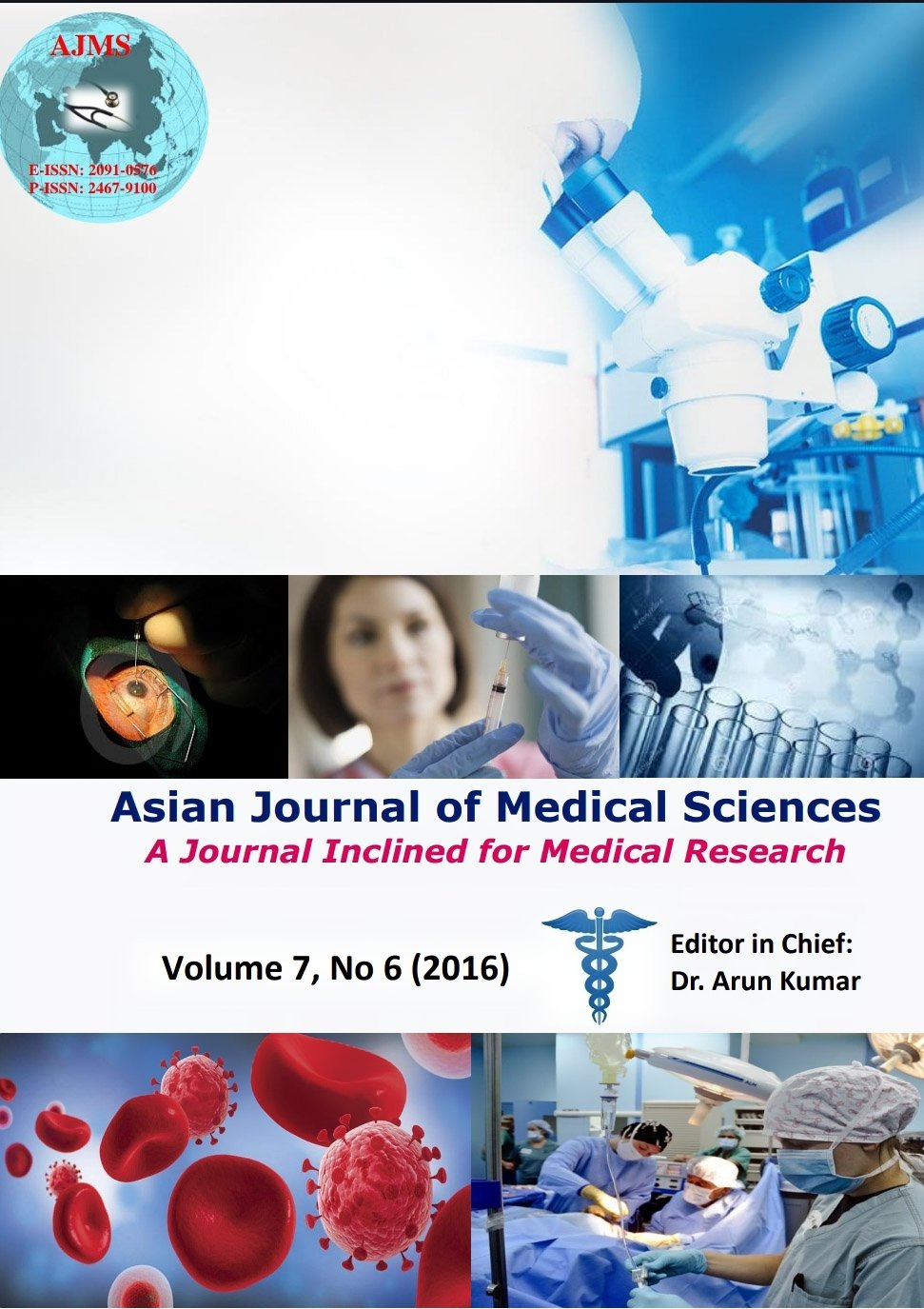Epicardial fat thickness and carotid intima-media thickness in patients with type 2 diabetes mellitus
Keywords:
Epicardial fat thickness (EFT), Carotid intima-media thickness (CIMT), type 2 diabetes mellitus (T2DM).Abstract
Background: Epicardial adipose tissue thickness has been considered to be a possible cardiovascular risk indicator in recent reports. Aim of this study was to evaluate the relationship of echocardiographic epicardial fat thickness (EFT) with carotid intima-media thickness (CIMT), in patients with type 2 diabetes mellitus (T2DM).
Materials and Methods: In this hospital based cross sectional observational study a total of 64 patients with T2DM (mean age 54.51±6.60 years and 75.0% male) and 76 age and sex-matched non-diabetic control (mean age 54.97±6.11years and 71.1% male) were evaluated. Echocardiographic EFT and ultrasonographic CIMT were measured in all subjects.
Results: Patients with T2DM had significantly increased EFT and CIMT than those of the non-diabetic controls (6.15±0.99 mm versus 4.39±0.61 mm, P< 0.001 and 0.77±0.09 mm versus 0.51±0.05 mm, P< 0.001, respectively). EFT was correlated with CIMT (r = 0.724, P < 0.001), duration of diabetes (r = 0.723, P < 0.001) and fasting plasma glucose level (r = 0.542, P < 0.001). Linear regression analysis showed that CIMT (β = 0.358, t = 3.658, P < 0.001) duration of diabetes (β = 0.324, t = 3.268, P = 0.001) and fasting plasma glucose level (β = 0.210, t = 3.302, P = 0.001) were found to be the independent predictors of EFT.
Conclusion: The echocardiographic EFT was significantly higher in patients with T2DM; and it was well correlated with CIMT, duration of diabetes and fasting plasma glucose level as being the independent predictors of EFT.
Asian Journal of Medical Sciences Vol.7(6) 2016 1-5
Downloads
Downloads
Published
How to Cite
Issue
Section
License
Authors who publish with this journal agree to the following terms:
- The journal holds copyright and publishes the work under a Creative Commons CC-BY-NC license that permits use, distribution and reprduction in any medium, provided the original work is properly cited and is not used for commercial purposes. The journal should be recognised as the original publisher of this work.
- Authors are able to enter into separate, additional contractual arrangements for the non-exclusive distribution of the journal's published version of the work (e.g., post it to an institutional repository or publish it in a book), with an acknowledgement of its initial publication in this journal.
- Authors are permitted and encouraged to post their work online (e.g., in institutional repositories or on their website) prior to and during the submission process, as it can lead to productive exchanges, as well as earlier and greater citation of published work (See The Effect of Open Access).




